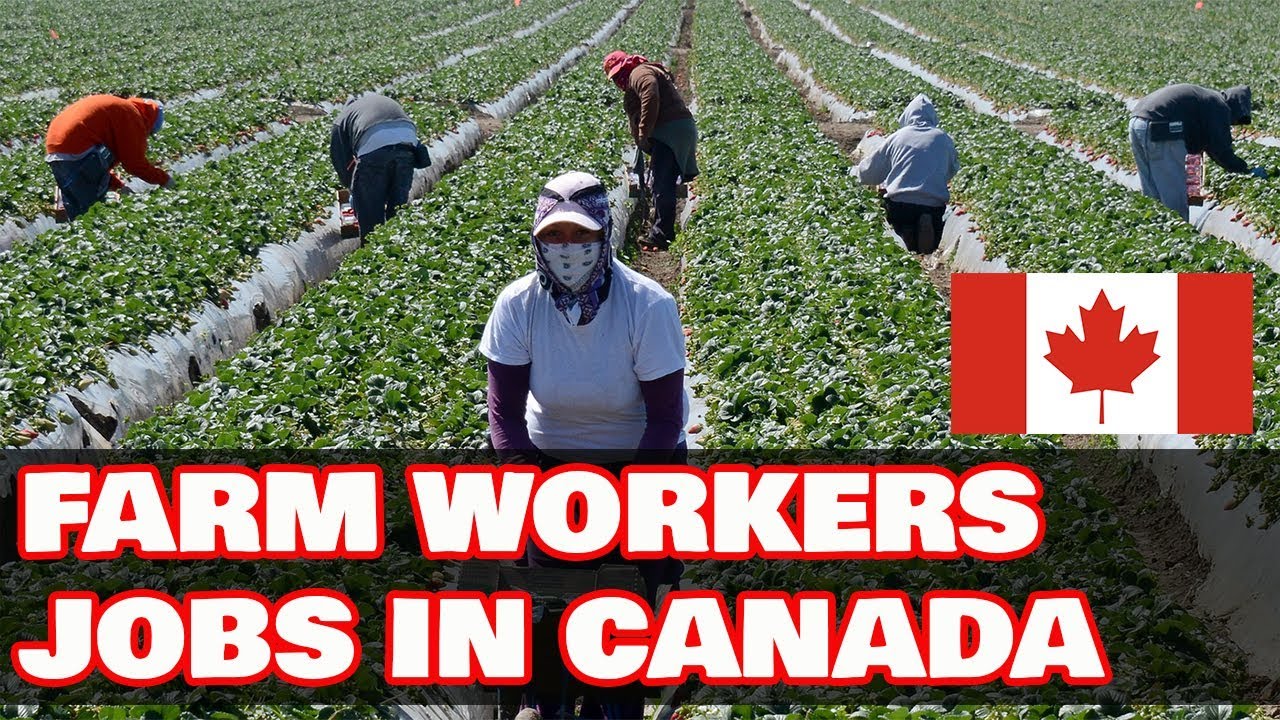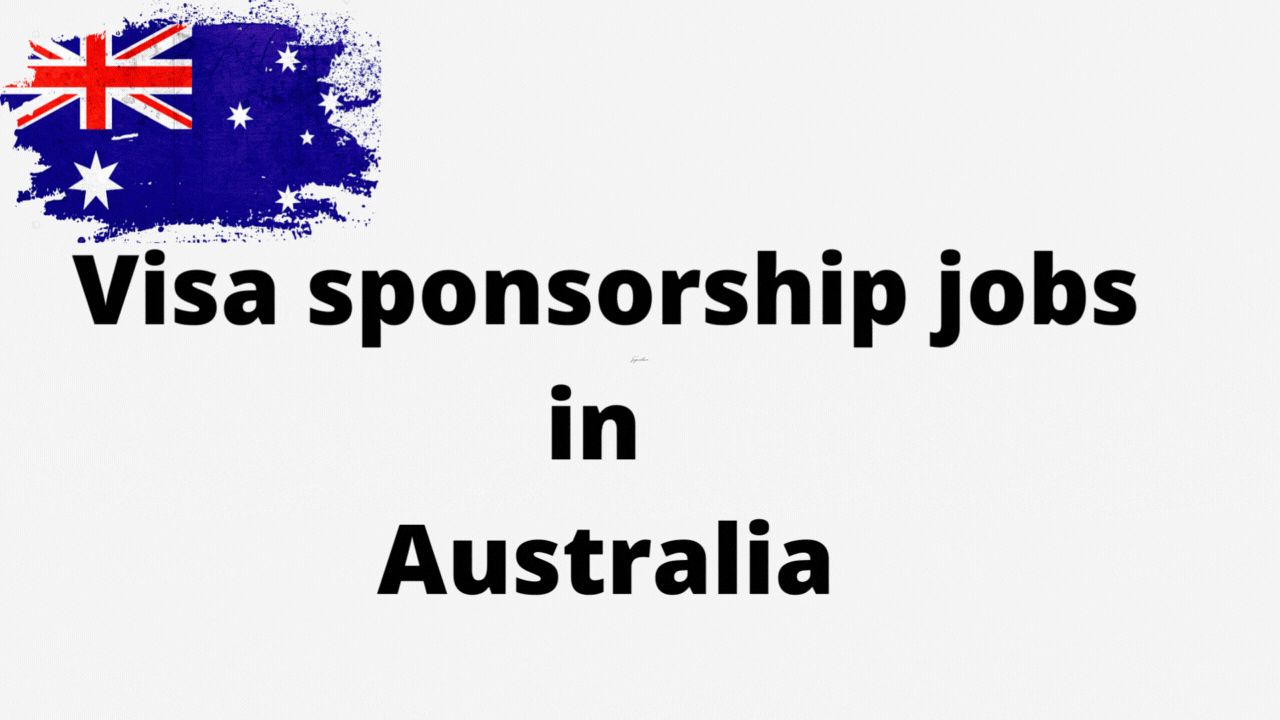Canada’s job market in 2025 is a beacon of opportunity for foreigners, fueled by labor shortages, an aging population, and a robust economy. If you’re envisioning a fresh start in a country known for its inclusivity and quality of life, this guide is your compass. With my background in immigration consulting and career coaching, I’ve woven together a detailed, actionable article that blends the latest data, real-world stories, and unique insights to empower you. Whether you’re a skilled professional or an entry-level worker, Canada’s urgent job market is calling—let’s dive into how you can answer.
The Urgent Need for Foreign Workers in Canada
Canada faces a demographic crunch. Statistics Canada reports that in 2024, the labor force participation rate fell to 65.1%, with 21% of the population aged 65 or older. Industries like healthcare, technology, construction, and agriculture are growing faster than the local workforce can support. The result? A projected 700,000 job vacancies by 2026, many of which are open to international talent.
The Canadian government is responding with ambitious immigration targets, aiming to welcome 510,000 permanent residents in 2025 through programs like Express Entry and Provincial Nominee Programs (PNPs). Temporary worker streams, such as the Temporary Foreign Worker Program (TFWP) and International Mobility Program (IMP), are also expanding to meet immediate needs. For foreigners, this translates to a golden window of opportunity—if you’re strategic.
A Personal Note
Having guided immigrants like Aisha, a nurse from Nigeria who secured a job in Manitoba in 2024, I’ve witnessed the life-changing impact of Canada’s job market. Aisha’s journey from uncertainty to earning $82,000 annually inspires me to share these insights with you. Her success, and thousands like it, proves that with the right approach, you can thrive in Canada.
High-Demand Jobs for Foreigners in 2025
Below, I’ve curated a list of the most urgent jobs for foreigners, based on 2024-2025 labor market trends, industry reports, and my own expertise. These roles span skill levels and regions, ensuring options for diverse backgrounds.
1. Registered Nurses and Healthcare Workers
Why Urgent? Canada’s healthcare system is stretched thin, with a projected shortage of 65,000 nurses by 2030 (Canadian Nurses Association). Aging demographics and post-COVID demands have spiked the need for registered nurses (RNs), licensed practical nurses (LPNs), and personal support workers (PSWs).
Key Details:
-
Average Salary: $78,000–$92,000 (RNs); $52,000–$68,000 (LPNs); $35,000–$50,000 (PSWs)
-
Requirements: Bachelor’s degree (RNs), diploma (LPNs), or certificate (PSWs); provincial licensing.
-
Visa Pathways: Express Entry, PNPs, employer-specific work permits.
-
Hotspots: Ontario, British Columbia, Quebec.
Real Example: Elena, a nurse from Ukraine, joined a hospital in British Columbia via the BC PNP in 2024. Her employer facilitated her licensing, and she’s now earning $85,000 with permanent residency in progress.
Expert Tip: Start your National Nursing Assessment Service (NNAS) application early—it can take 8–12 months to process foreign credentials.
 image: Nurses are Canada’s healthcare heroes, with urgent opportunities for foreigners.
image: Nurses are Canada’s healthcare heroes, with urgent opportunities for foreigners.
2. Software Engineers and IT Specialists
Why Urgent? Canada’s tech sector is a global hub, with 220,000 new tech jobs forecast by 2028 (ICTC). Software engineers, data scientists, and cybersecurity experts are critical as AI and digital transformation accelerate.
Key Details:
-
Average Salary: $85,000–$130,000
-
Requirements: Degree in computer science or equivalent; skills in Python, JavaScript, or cloud platforms.
-
Visa Pathways: Express Entry, Global Talent Stream (2-week work permits).
-
Hotspots: Toronto, Vancouver, Montreal.
Real Example: Sanjay, a data scientist from India, landed a Toronto job through the Global Talent Stream in 2024. Earning $110,000, he’s now mentoring other newcomers.
Expert Tip: Showcase projects on GitHub and connect with Canadian recruiters on LinkedIn to boost visibility.
 image: Canada’s tech hubs in Toronto and Vancouver welcome global talent.
image: Canada’s tech hubs in Toronto and Vancouver welcome global talent.
3. Skilled Trades (Welders, Electricians, Carpenters)
Why Urgent? A drop in trade school enrollment has left 270,000 construction jobs unfilled (BuildForce Canada, 2024). Welders, electricians, and carpenters are vital for infrastructure and energy projects.
Key Details:
-
Average Salary: $55,000–$75,000
-
Requirements: Apprenticeship or trade certification; Red Seal for nationwide recognition.
-
Visa Pathways: TFWP, PNPs, Federal Skilled Trades Program.
-
Hotspots: Alberta, Ontario, Saskatchewan.
Real Example: Carlos, a welder from Mexico, secured an Alberta job via TFWP in 2024. His employer covered relocation, and he earns $68,000 with overtime.
Expert Tip: Pursue Red Seal certification to maximize job mobility across provinces.

image: Skilled trades like welding are in high demand, offering stable careers.
4. Agricultural and General Laborers
Why Urgent? Agriculture and construction rely on foreign workers for seasonal and permanent roles. The Seasonal Agricultural Worker Program (SAWP) and TFWP address shortages in farm work and manual labor.
Key Details:
-
Average Salary: $32,000–$48,000
-
Requirements: Minimal education; physical stamina.
-
Visa Pathways: SAWP, TFWP, work permits.
-
Hotspots: British Columbia, Ontario, Quebec.
Real Example: Miguel, a farm worker from Guatemala, joined SAWP in Ontario in 2024. He earns $38,000 seasonally and saves significantly.
Expert Tip: SAWP is seasonal, but PNPs can offer permanent residency for long-term goals.
5. Truck Drivers
Why Urgent? E-commerce and logistics growth have created a 28,000-driver shortage (Trucking HR Canada, 2024). Long-haul and local drivers are in demand.
Key Details:
-
Average Salary: $55,000–$75,000
-
Requirements: Class 1/AZ license; some employers offer training.
-
Visa Pathways: TFWP, PNPs, Express Entry.
-
Hotspots: Manitoba, Ontario, Alberta.
Real Example: Amrit, a driver from India, joined a Manitoba firm through a PNP in 2024. His employer funded his license, and he earns $70,000.
Expert Tip: Look for companies offering training to offset licensing costs.
Table 1: Top 5 Urgent Jobs for Foreigners in 2025
|
Job Role |
Average Salary |
Key Requirements |
Visa Pathways |
Hotspot Provinces |
|---|---|---|---|---|
|
Registered Nurse |
$78,000–$92,000 |
Bachelor’s degree, licensing |
Express Entry, PNPs, Work Permits |
ON, BC, QC |
|
Software Engineer |
$85,000–$130,000 |
Degree or experience, coding skills |
Express Entry, Global Talent Stream |
ON, BC, QC |
|
Welder |
$55,000–$75,000 |
Apprenticeship, Red Seal (optional) |
TFWP, PNPs, Skilled Trades |
AB, ON, SK |
|
Agricultural Laborer |
$32,000–$48,000 |
Minimal education, physical fitness |
SAWP, TFWP, Work Permits |
BC, ON, QC |
|
Truck Driver |
$55,000–$75,000 |
Class 1/AZ license, clean record |
TFWP, PNPs, Express Entry |
MB, ON, AB |
Source: Statistics Canada, Job Bank, 2024–2025.
Navigating Canada’s Immigration Pathways
A job offer is only the start—securing the right visa is crucial. Here’s a breakdown of 2025’s key immigration options.
1. Express Entry
-
What: Points-based system for skilled workers (Federal Skilled Worker, Skilled Trades, Canadian Experience Class).
-
Eligibility: Based on age, education, experience, and language (IELTS/CELPIP).
-
Process: Create a profile, earn a Comprehensive Ranking System (CRS) score, and receive an Invitation to Apply (ITA).
-
Timeline: 6–12 months for permanent residency.
Insight: The 2024 CRS cut-off averaged 495 points. A job offer adds 50–200 points; a PNP nomination adds 600.
2. Provincial Nominee Programs (PNPs)
-
What: Province-specific streams targeting local labor gaps.
-
Eligibility: Varies; some need job offers, others prioritize skills.
-
Process: Apply directly or via Express Entry-linked streams.
-
Top PNPs: Ontario, BC, Alberta, Manitoba.
Real Example: Mei, a carpenter from Vietnam, used the Manitoba PNP in 2024. Her trade skills led to permanent residency in 11 months.
3. Temporary Foreign Worker Program (TFWP)
-
What: Employer-driven program requiring a Labour Market Impact Assessment (LMIA).
-
Eligibility: Job offer; LMIA proves no local workers available.
-
Timeline: Work permits for 1–3 years.
Expert Tip: Rural employers are more likely to sponsor due to local labor shortages.
4. Global Talent Stream
-
What: Fast-track permits for tech/STEM roles.
-
Eligibility: Job offer in designated occupations.
-
Timeline: 2 weeks.
Insight: In 2024, 65% of Global Talent Stream applicants were from Asia.
5. Seasonal Agricultural Worker Program (SAWP)
-
What: Temporary work for farm laborers from select countries (e.g., Mexico, Caribbean).
-
Eligibility: Agricultural experience; employer sponsorship.
-
Timeline: 8-month contracts.
Expert Tip: Explore PNPs for permanent residency after SAWP.
Table 2: Immigration Pathways for Urgent Jobs
|
Pathway |
Eligibility |
Processing Time |
Best for Jobs |
|---|---|---|---|
|
Express Entry |
Skilled workers, high CRS score |
6–12 months |
Nurses, Engineers, Trades |
|
PNP |
Varies, often job offer |
8–18 months |
Trades, Drivers, Laborers |
|
TFWP |
Job offer, LMIA |
3–6 months |
Laborers, Trades, Drivers |
|
Global Talent Stream |
Tech/STEM job offer |
2 weeks |
Engineers, Data Scientists |
|
SAWP |
Agricultural experience |
1–3 months |
Farm Workers |
Source: IRCC, 2024.
How to Secure an Urgent Job in Canada
Landing a job requires a clear plan. Here’s a step-by-step guide with expert tips.
1. Research Job Opportunities
Use Job Bank, Indeed, and provincial boards like WorkBC or SaskJobs. Filter for LMIA-eligible roles.
Insight: My client, Fatima, targeted Alberta’s construction sector in 2024. Using “welder” and “LMIA” as keywords, she secured two offers in weeks.
2. Craft a Canadian-Style Resume
Keep resumes concise (1–2 pages), focusing on results. Tailor cover letters to each job, addressing employer needs.
Expert Tip: Use metrics, e.g., “Reduced system downtime by 15% through optimized code.”
3. Network Effectively
Canada’s “hidden job market” fills 60% of roles unadvertised (Canada.ca). Join LinkedIn, attend job fairs, and contact recruiters.
Real Example: Luis, a cybersecurity expert from Colombia, connected with a Montreal recruiter on LinkedIn in 2024, landing a $100,000 job.
4. Ace the Interview
Expect behavioral questions (“Describe a challenge you overcame”). Use the STAR method (Situation, Task, Action, Result).
Expert Tip: Research the employer’s mission. For a hospital, highlight patient care; for a tech firm, innovation.
5. Verify Credentials
Professions like nursing or trades require Canadian licensing. Contact bodies like the College of Nurses or Red Seal.
Insight: Delays in credential assessment cost my client, Priya, months. Start before leaving your country.
Table 3: Job Search Resources for Foreigners
|
Resource |
Description |
Best for |
Website |
|---|---|---|---|
|
Job Bank |
Government job board, LMIA-eligible roles |
All jobs |
canada.ca/en/services/jobs |
|
Indeed |
Broad job listings |
Tech, Healthcare, Trades |
indeed.ca |
|
WorkBC |
BC-specific job board, PNP links |
Trades, Laborers, Tech |
workbc.ca |
|
|
Networking and jobs |
Professionals, Tech |
linkedin.com |
|
ISS of BC |
Settlement and job support |
Newcomers, Low-skill workers |
issbc.org |
Source: Canadian government and industry sites, 2024.
Overcoming Common Challenges
1. Language Proficiency
English/French skills are essential (IELTS 6.5+). Free language classes are available via ISS of BC or libraries.
Solution: Use apps like Duolingo or join community conversation groups.
2. Credential Assessment
Foreign degrees need evaluation ($500–$2,000), often taking 6–12 months.
Solution: Use World Education Services (WES) and apply early.
3. Cultural Adaptation
Canadian workplaces value directness and teamwork. Missteps can affect job success.
Solution: Watch Newcomers Canada on YouTube or attend cultural workshops.
Insight: My client, Omar, struggled with indirect communication. Practicing assertiveness helped him secure a tech role.
Frequently Asked Questions (FAQs)
Q: What are the easiest jobs for foreigners in Canada?
A: Low-skill roles like farm workers, laborers, and retail staff are accessible due to high demand and minimal requirements.
Q: Do I need a job offer to immigrate?
A: No, Express Entry doesn’t require one, but it boosts your CRS score. PNPs and TFWP often need employer sponsorship.
Q: How long does a work permit take?
A: Global Talent Stream: 2 weeks; TFWP: 3–6 months; SAWP: 1–3 months.
Q: Can I bring my family?
A: Yes, most work permits allow dependents to apply for work/study permits. Express Entry includes family.
Q: Are there age limits for jobs?
A: No, but Express Entry favors under 45. TFWP/SAWP have no age caps.
Q: What’s the cost of credential assessment?
A: $500–$2,000, depending on the profession and service (e.g., WES, NNAS).
Q: Can I switch jobs on a work permit?
A: Employer-specific permits require a new LMIA. Open work permits allow job changes.
Q: How do I find LMIA-eligible jobs?
A: Use Job Bank’s LMIA filter or contact employers in high-demand sectors like agriculture or trades.
Q: Is permanent residency possible after temporary work?
A: Yes, via Express Entry, PNPs, or Canadian Experience Class after 1–2 years of work.
Q: Are there free job search supports?
A: Yes, settlement agencies like ISS of BC and CIC News offer free job coaching and resume help.
Seize Your Canadian Opportunity
Canada’s urgent job market is your chance to build a brighter future. Whether you’re coding the next big app, caring for patients, or constructing communities, your skills are in demand. Take action today:
-
Explore Job Bank for open roles.
-
Start an Express Entry profile or apply to a PNP.
-
Connect with settlement agencies like ISS of BC for free support.
-
Polish your resume and network on LinkedIn.
The clock is ticking—Canada’s job market is booming, and 2025 is your moment. Share your plans below or reach out for tailored advice. Let’s turn your Canadian dream into reality!
Ready to move forward? See our latest Canada job listings here and start your application today!










